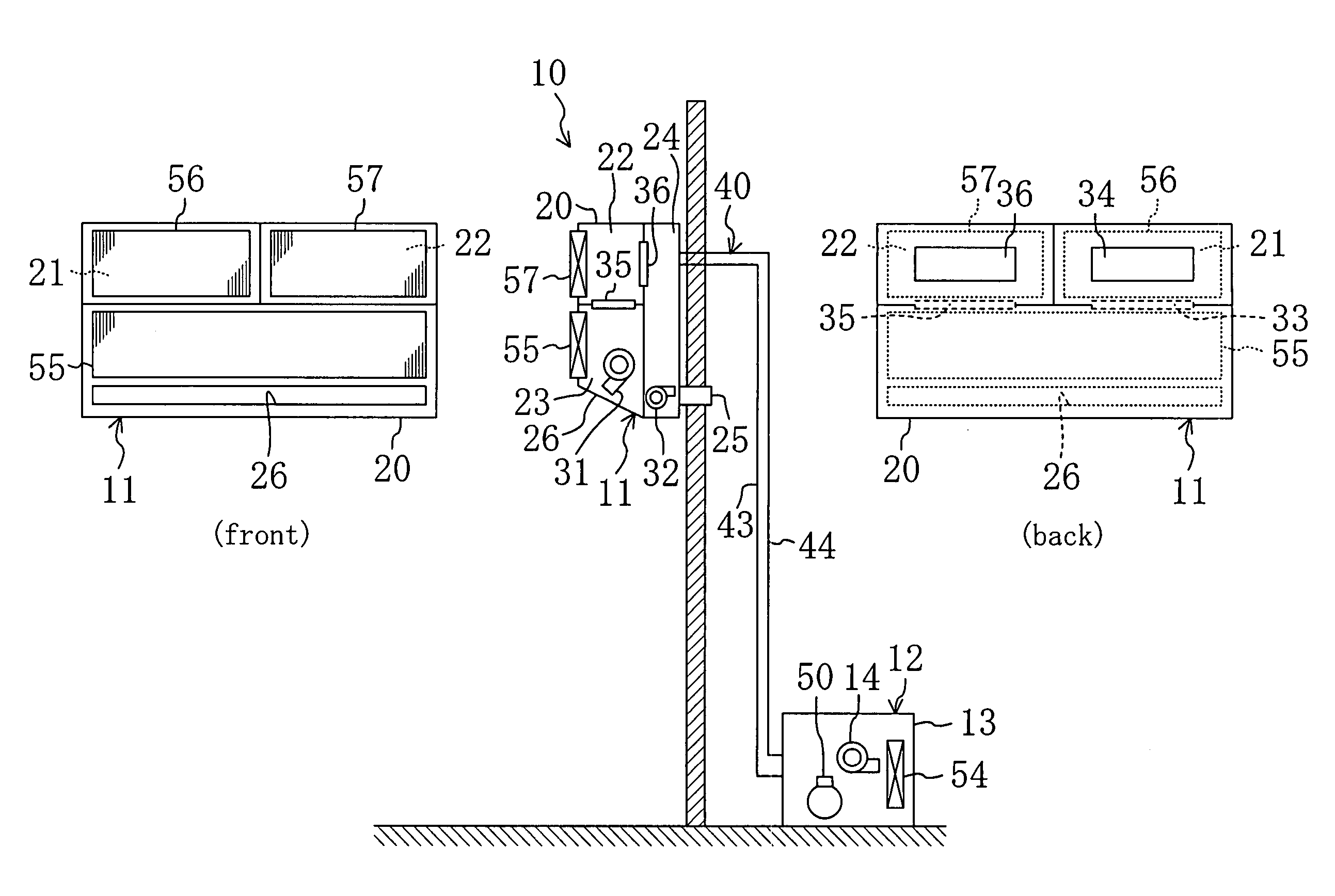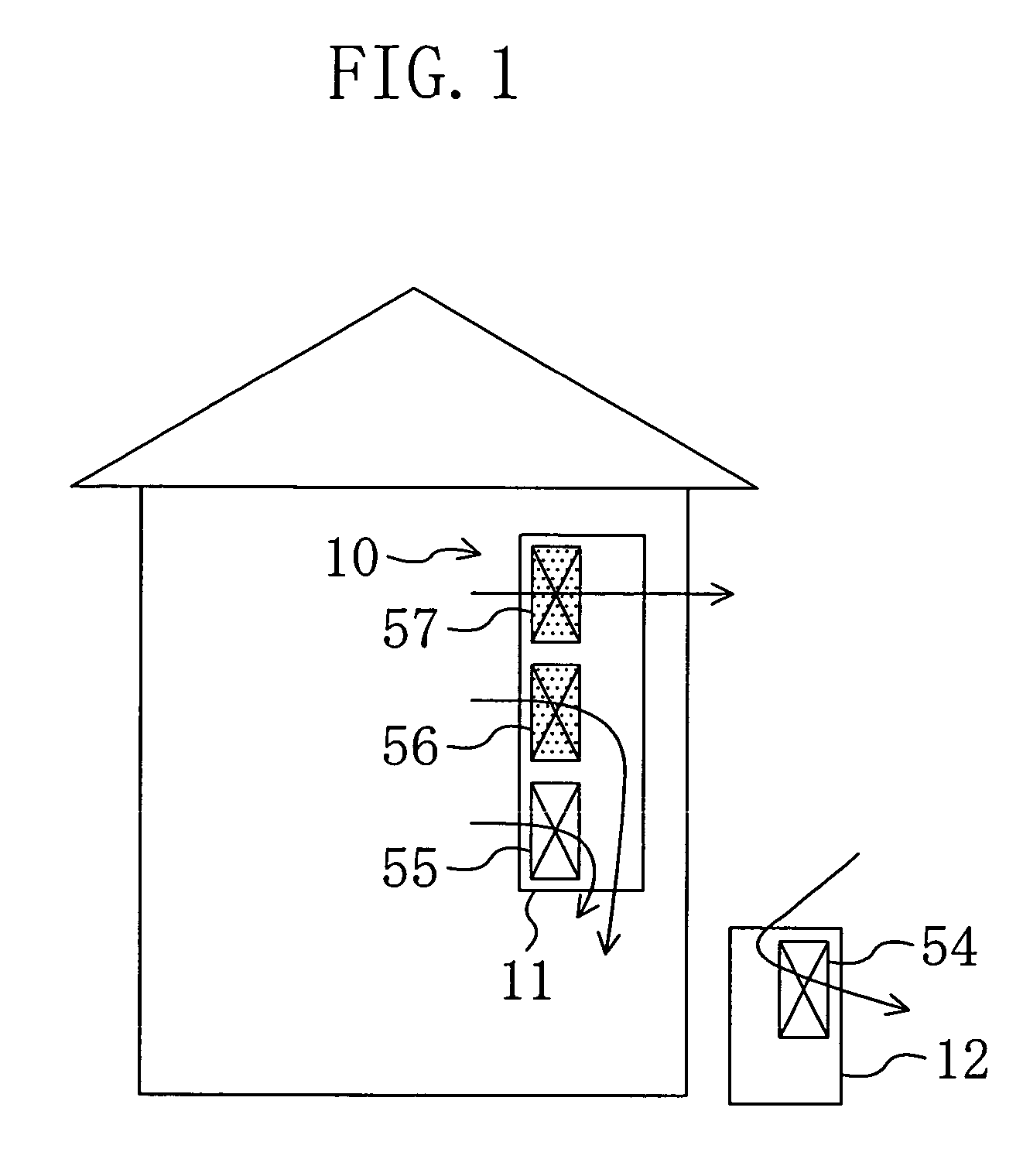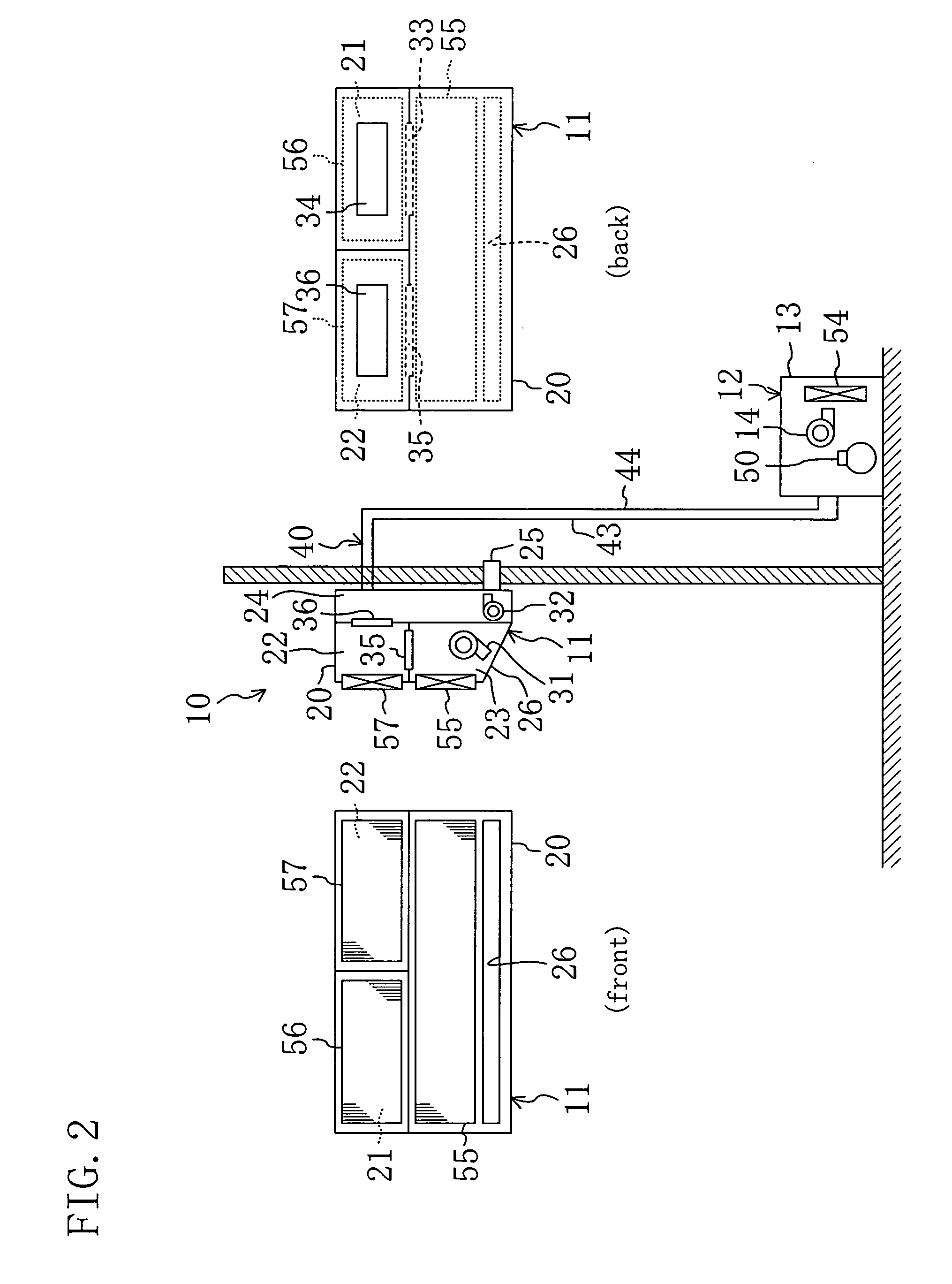Air conditioning system
- Summary
- Abstract
- Description
- Claims
- Application Information
AI Technical Summary
Benefits of technology
Problems solved by technology
Method used
Image
Examples
embodiment 1
of the Invention
[0070]Embodiment 1 of the present invention is described. An air conditioning system (10) of the present embodiment runs a vapor compression refrigeration cycle by circulating refrigerant through a refrigerant circuit (40) to cope with both of indoor sensible heat load and latent heat load.
[0071]As shown in FIG. 1, the air conditioning system (10) is configured as a so-called separate type and includes an indoor unit (11) and an outdoor unit (12). The indoor unit (11) includes an indoor heat exchanger (55), a first adsorption heat exchanger (56) and a second adsorption heat exchanger (57) and is disposed in the building. The indoor unit (11) is configured as a so-called wall-mounted type, namely, is mounted on a wall surface of a room. On the other hand, the outdoor unit (12) includes an outdoor heat exchanger (54) and is disposed outside the building.
[0072]As shown in FIG. 2, the indoor unit (11) and the outdoor unit (12) are connected to each other via a gas-side i...
embodiment 2
of the Invention
[0117]Embodiment 2 of the present invention is described. Though the air conditioning system (10) of Embodiment 1 is configured as a separate type which includes an indoor unit (11) and an outdoor unit (12), the air conditioning system (10) of the present embodiment is configured as an integral type in which all components are contained in a single main unit casing (60). A description is given here to the air conditioning system (10) of the present embodiment only in different points from that of Embodiment 1.
[0118]As shown in FIG. 13, the air conditioning system (10) of the present embodiment is disposed in the attic of a building such as a house and connected to the room space and the outdoor space through ducts. The air conditioning system (10) contains a whole refrigerant circuit (40) in the main unit casing (60) disposed in the attic. Therefore, the refrigerant circuit (40) of the present embodiment is wholly disposed in the building.
[0119]In the refrigerant cir...
embodiment 3
of the Invention
[0156]Embodiment 3 of the present invention is described. An air conditioning system (10) of the present embodiment varies from Embodiment 1 in the arrangement of the first adsorption heat exchanger (56) and the second adsorption heat exchanger (57). A description is given here to the present embodiment only in different points from Embodiment 1.
[0157]As shown in FIGS. 19 and 20, in the air conditioning system (10) of the present embodiment, a first adsorption heat exchanger (56) and a second adsorption heat exchanger (57) are contained in an outdoor unit (12). Specifically, an outdoor casing (13) for the outdoor unit (12) contains an outdoor heat exchanger (54) and an outdoor fan (14) like Embodiment 1 and additionally contains the two adsorption heat exchangers (56, 57). Further, in an indoor unit (11). of the present embodiment, an indoor casing (20) contains an indoor heat exchanger (55) and an indoor fan (31).
[0158]As shown in FIGS. 20 and 21, the outdoor heat e...
PUM
 Login to View More
Login to View More Abstract
Description
Claims
Application Information
 Login to View More
Login to View More - R&D
- Intellectual Property
- Life Sciences
- Materials
- Tech Scout
- Unparalleled Data Quality
- Higher Quality Content
- 60% Fewer Hallucinations
Browse by: Latest US Patents, China's latest patents, Technical Efficacy Thesaurus, Application Domain, Technology Topic, Popular Technical Reports.
© 2025 PatSnap. All rights reserved.Legal|Privacy policy|Modern Slavery Act Transparency Statement|Sitemap|About US| Contact US: help@patsnap.com



